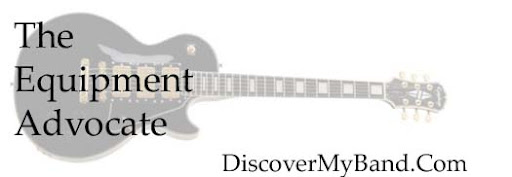Powered soundboard? Powered speakers? Seperate amp? Why choose one over the other? There are advantages to all three, and disadvantages as well. Of the factors that play into your choice, a few are more important than others.
Having a powered soundboard is best for ease of setup. Both the seperate amp, and the powered board need a single outlet. All you have to do is plug in at the soundbooth, and run the audio cables to your speakers whereever you put them. That also means if power has a problem in the system it is easily identified, as aposed to being plugged into outlets on multiple breakers, but all on one circuit also brings a higher likelihood of blowing a breaker. Which brings us to the next point: with a powered soundboard there is a limit to the size (loudness) of your overall system with the amount of electricity you can draw.
Speakers that have a powered amp built inside is a great idea for people who don't want to worry about ruining their system, A built in is designed for the optimum compatibility with amp size and speaker capacity...which means that it won't blow the speaker. If you crank the volume all the way up, the speaker will stay in a solid range, and many brands will automatically cut itself for a second on a signal that is too loud. The disanvantage here is that if a speaker cuts, then there is dead time on that one speaker, but that can be avoided by getting speakers that can handle the volume levels you need, and not sending a signal turned up all the way. Again, you have to have an outlet, or an extension chord going to each speaker, which makes setup time a little longer, but it may be worth it for the security of your system. Another great reason for a powered speaker is that you can run audio cables to a powered speaker in any arrangement you want: daisy chain some, run some individually, or even plug an instrument straight into it.
The seperate amp has many of the pluses and minuses as the all inclusive board, with flexibility. If you only require one amp for the size show you are playing, it can be stowed in the soundbooth and used the same way as mentioned, but you can expand to multiple amps, which means you can also diversify them over circuits, and place them where needed. If an amp, a speaker, or the board goes bad, or you outgrow the number of channels on your board, with the seperate system you can buy just an amp, or just a board, or just a speaker which is much cheaper than buying another powered unit. This configuration is ideal for poeple who understand The amount of power their speakers can handle, and how to setup the right way everytime.
So there is no complete answer. Having each piece seperate is ideal for people who really grasp electrical capacity of the system they are configuring, and is cheaper to replace individual pieces. A powered board is great for simple, quick system setup on location. Powered speakers are best to never worry about blowing, or wearing away at your speakers by overpowering them.
 are using their sound system, how many inputs will you need? The clearer you are on your needs, the more likely your show will be a success. Try going to successful bands websites that you like, they probably have a section somewhere for booking, and take a look at their rider. The more demand for the musician, the more specific they get. As a place looking to host live music, they will usually apreciate the lack of "winging it" when all eyes are on you...but until you really hit it big, don't ask for the moon.
are using their sound system, how many inputs will you need? The clearer you are on your needs, the more likely your show will be a success. Try going to successful bands websites that you like, they probably have a section somewhere for booking, and take a look at their rider. The more demand for the musician, the more specific they get. As a place looking to host live music, they will usually apreciate the lack of "winging it" when all eyes are on you...but until you really hit it big, don't ask for the moon.
